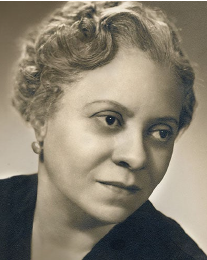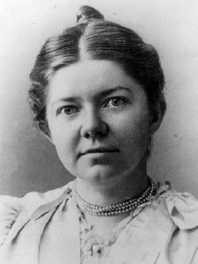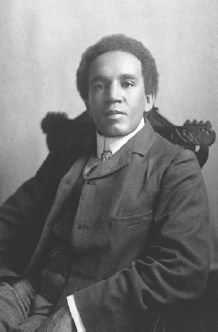
Fanfare Solaris
Roger Zare (b. 1985)
Program Note by the Composer:
Solaris is a Latin word that means ‘pertaining to the sun,’ and this piece is a bright and celebratory work. It is inspired by the long days of summer –a season of outdoor festivals, barbecues, vacations, and weddings.
After I grew up in Florida, it wasn’t until I moved farther north that I truly appreciated the differences in seasons; in Chicago, the longest day of the year, June 21, has over six more hours of sunlight than the shortest day in December, sharply contrasting the relative lack of variety I experienced in the south.

This fanfare is a celebration of the annual end of Seasonal Affective Disorder. Rising melodies and unpredictable rhythms mark the energetic opening, where the strings, winds, and brass rapidly pass around musical ideas. The middle section is more lyrical, featuring solo woodwinds and flowing melodies with occasional playful interruptions. As the music gets increasingly grandiose, the flourishes from the opening return, bringing the fanfare to a triumphant close.
****
Violin Concerto No. 1 in D major
Florence Price (1887-1953)
The first African-American woman recognized as a symphonic composer, Florence Beatrice Price enrolled at the New England Conservatory in Boston after completing her high school studies in Arkansas. After graduating with honors, she returned to the South to head the music department of the historically Black institution now known as Clark Atlanta University. She eventually married and moved back to her hometown of Little Rock, but worsening racial tensions would prompt the couple to move north to Chicago.

Here, Price entered a new and fulfilling period in her composition career. With a premiere by the Chicago Symphony Orchestra in 1933, Price’s Symphony in E minor became the first composition by an African-American woman to be played by a major orchestra. In addition to three other symphonies and a number of orchestral works, Program Notes
(Price, cont.) Price composed two violin concertos, thought to be lost until they were discovered with dozens of other scores in an abandoned house in Illinois in 2009. Both violin concertos resemble the virtuosity, the lyricism, and compositional techniques that are hallmarks of Western European composition, but also incorporate the inspiration of African-American spirituals and themes of Price’s roots in the American South.
****

Gaelic Symphony, Op. 32, Mvt. 2 “Alla siciliana – Allegro vivace”
Amy Beach (1867-1944)
Amy Marcy Chaney was born in New Hampshire on September 5, 1867. Amy was a bonafide musical prodigy, giving her first piano public piano recitals at 7. She had her debut at 18 with the Boston Symphony Orchestra performing Chopin’s Concerto in F Minor. The year of her Boston Symphony debut, Amy married Henry Harris Aubrey Beach, a Boston-area physician who was 24 years her senior. Henry Beach insisted that Amy limit her public performances after their marriage. She was limited to two public recitals a year, and was pushed to compose more and perform less. Amy was largely self-taught as a composer, as Henry disapproved of Amy’s private study with a composition teacher.
Amy’s first major compositional success was her Mass in E-flat Major performed by the Handel and Haydn Society in 1892, notable as the first piece ever performed by the institution composed by a woman. The Gaelic Symphony was given its premiere performance by the Boston Symphony in 1896 making it the first symphony composed and published by an American woman. Often, the Gaelic Symphony is thought of as a response to Dvorak’s call to create an American music style based on Black and Indigenous music. Beach is often quoted out of context for her view that, “We of the North should be far more likely to be influenced by old English, Scotch, or Irish songs inherited with our literature from our ancestors than by the songs of a portion of our people who were kept for so long in bondage, and whose musical utterances were deeply rooted in the heart-breaking griefs attendant upon their condition.” Far from being dismissive of Black Americanmusic, Beach drew upon Scotch and Irish folk songs for the Gaelic Symphony as she believed she could more faithfully depict those styles of music. Anticipating 21st century artistic concerns of cultural appropriation, Beach uses folk traditions of her own lived culture, rather than unfaithfully drawing from others.
The NIHCO performs the second movement of the Gaelic Symphony, a Trio-Scherzo movement inspired by the song “The Little Field of Barley.” Beach inverts the expected structure of this kind of symphonic movement, beginning and ending the movement with the song with a boisterous Scherzo in the middle. Beach’s compositional prowess is on full display in this movement: a keen sense of melody, complex counterpoint, sophisticated command of post-Romantic tonal harmony, and colorful orchestrations.
****
Petite Suite de Concert, Op. 77
Samuel Coleridge-Taylor (1875-1912)
Samuel Coleridge-Taylor was born in London on August 15, 1875. His father was a physician from Sierra Leone, and his mother was an English woman. When his father’s medical practice failed, he returned to Africa, leaving Samuel to be raised by his mother and grandparents. His family encouraged his musical talent, eventually enrolling in the Royal College of Music as a violinist, pianist, and later a composer at the age of 15. Coleridge-Taylor was a protege of Sir Charles Stanford, an Irish composer and conductor.

Edward Elgar was also an early supporter of Coleridge-Taylor’s work, who recommended him for commissions and publications. Coleridge-Taylor went on three very successful tours of the United States and was received by President Theodore Roosevelt at the White House in 1904. As a successful Black English composer, Coleridge-Taylor was warmly received by the U.S. Black community, befriending W.E.B. Du Bois and collaborating with Laurence Dunbar, whose poetry he set to music. Coleridge-Taylor died at the age of 37 in the midst of a thriving career.
The Petite Suite de Concert was written in 1911, a year before Coleridge-Taylor’s death. Cast in four movements, the work is both tuneful and light, but also harmonically complex with ingenious orchestrations. Coleridge-Taylor seems to foreshadow the light British classical style of the 1930s and 1940s, made popular by Eric Coates (born 1886) and Hayden Wood (born 1882).